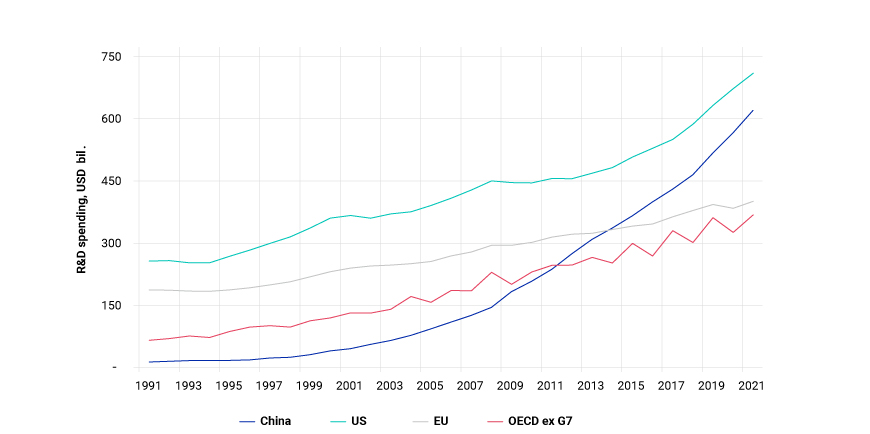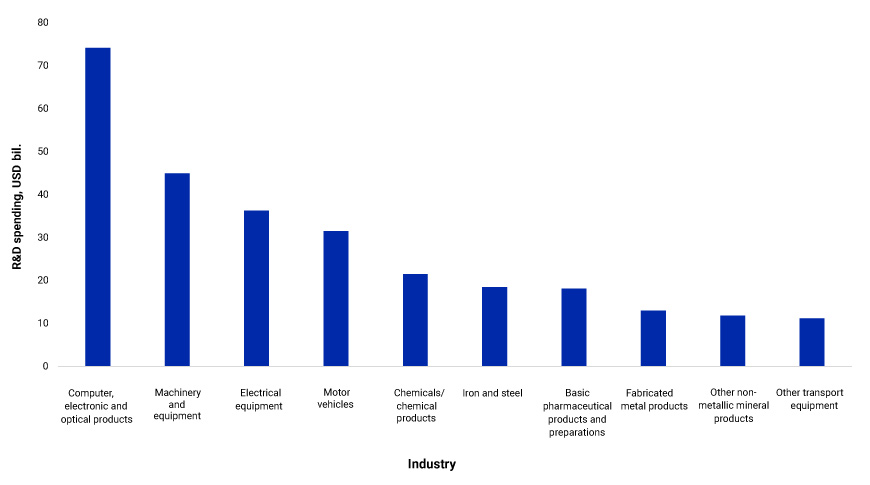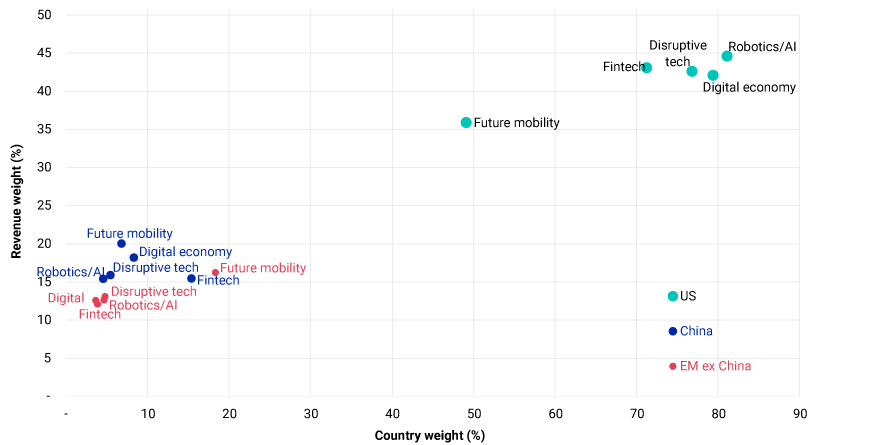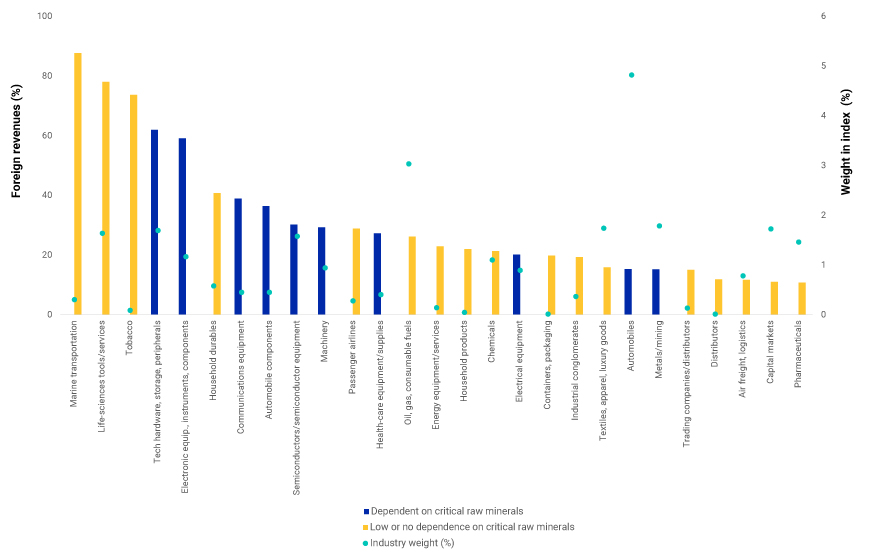A significant transformation is underway in global manufacturing and supply chains, as multinational companies increasingly adopt nearshoring, friendshoring, reshoring and China-plus strategies. Geopolitical uncertainties, macroeconomic-regime change and disruptions following the COVID-19 pandemic have all played a role in companies’ moving away from existing just-in-time logistics and lean inventories.
Given that China is the world’s largest manufacturing base,[1] it becomes particularly important for investors to understand China’s role in the global supply chain. Are parts of the global supply chain more heavily reliant on China than other parts? We explore which industries and themes may be more dependent on China from a manufacturing-ecosystem and raw-resources perspective.
Establishing competitiveness over the years via R&D
China’s historical supply-chain advantage may no longer be based solely on labor cost but on its manufacturing ecosystem.[2] Policy-driven development of human capital and technological innovation has been supported by investment in research and technology development. After growing rapidly year on year over the past three decades, China’s total R&D spending hit USD 660 billion in 2021.[3]
China’s R&D spending was second only to the US

Recent spending has been concentrated in tech- and resource-driven manufacturing, such as computers, communications and electronic equipment, machinery, automobiles, medicines, raw-chemical materials and metal products. China’s long-term efforts have made it a mainstay manufacturing center in numerous technologies and industries. Some companies in these sectors may find it difficult to move supply chains out of China in the short term.
China’s highest R&D spending was in computer, electronic and optical products

China has focused its R&D spending on technology and manufacturing infrastructure, including telecommunications networks, data centers, industrial parks and logistics networks, as well as on talent development.[4] Through 2021, China had installed more industrial robots than the rest of the world combined. This infrastructure and talent pool have supported efficient and cost-effective production processes, an important factor in the competitiveness and leadership of China’s manufacturing hub.
Using MSCI Economic Exposure data and the MSCI global transformative-technologies thematic indexes, we can compare the revenue exposure and index weight of companies linked to these themes in the U.S., China and emerging markets (EM) ex China. The U.S. is the leader in global technology by index weight and revenue exposure. China’s revenue exposure to the transformative-technologies theme, however, exceeded that of all other EM combined.
China’s tech-innovation exposure exceeded that of other EM countries

China’s footprint and role in high-end manufacturing and technological innovation may make it more resilient to supply-chain reconfiguration for companies in technology- and innovation-oriented industries.
Natural resources may strengthen China’s supply-chain resilience
China also controls a significant share of the global supply chains in several critical raw minerals, at either the extraction or processing stage.[5] Many of these minerals are key inputs in industries, such as clean energy and technology, advanced electronics and health care.[6] These industries may have less flexibility to reconfigure their supply chains to locations outside of China in the short to medium term compared to other export-dependent industries.
To understand which industries could be more resilient, we first identified the Global Industry Classification Standard (GICS®)[7] industries in China that have more than 10% exposure to foreign revenues. As of Sept. 29, 2023, 27 GICS industries derived more than 10% of their revenues through exports and accounted for a 27.5% weight in the MSCI China Index.
We then mapped the GICS sub-industries to the industries dependent on critical raw minerals[8] and found 10 with dependencies, including technology hardware, electronic and communications equipment, automobile components and machinery. Multinational companies in these industries may face a challenge in diversifying their production away from China.
Critical mineral dependence of top export-oriented industries in the MSCI China Index

Our analysis could raise two important points for global investors. First, our observations can serve as a reminder of China’s continued importance in the global supply chain. And second, they may provide a better understanding of why certain industries and themes highly dependent on China could be more exposed to geopolitical risk or sentiment, as well as the challenges of diversifying that risk away by moving supply chains to other countries.

